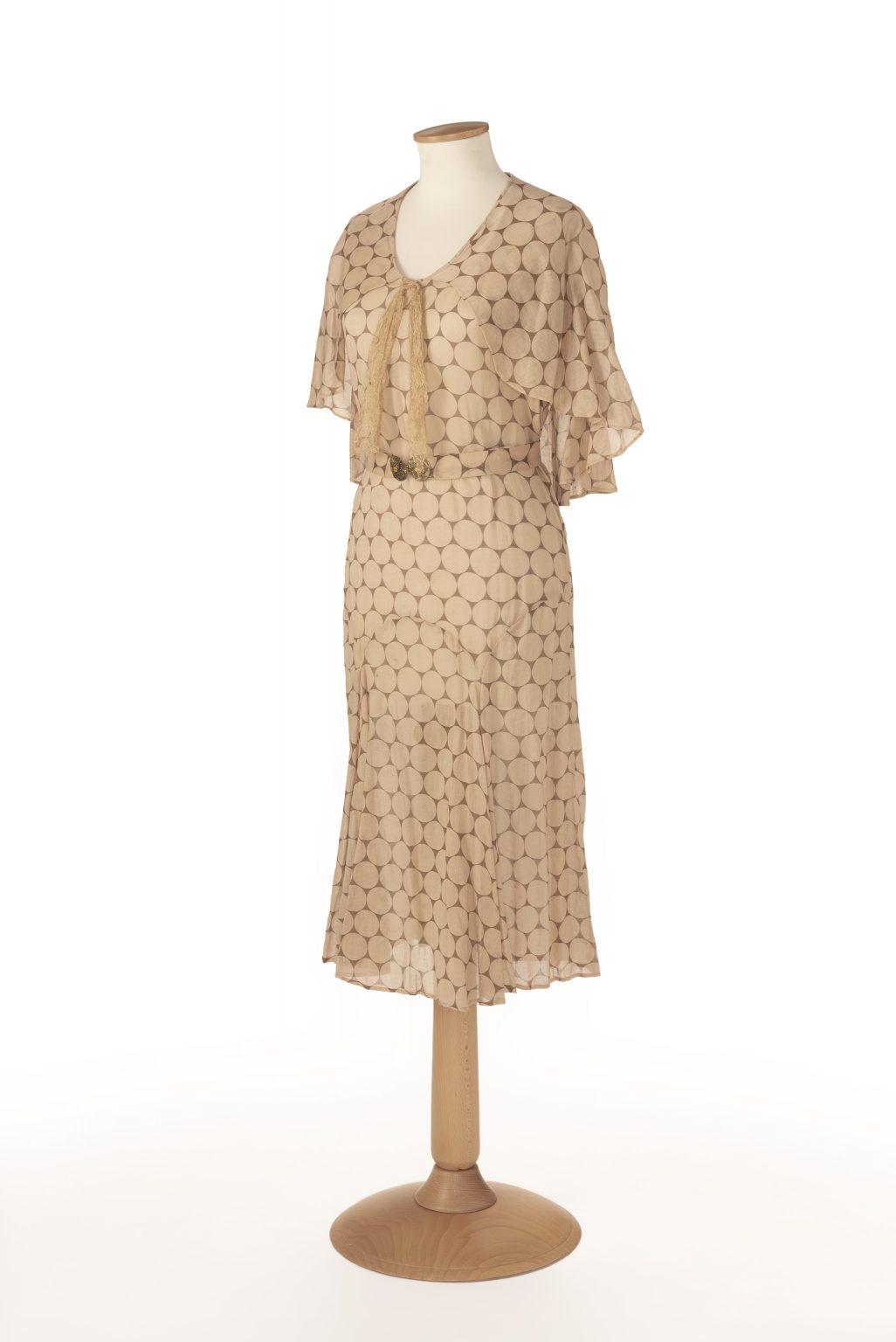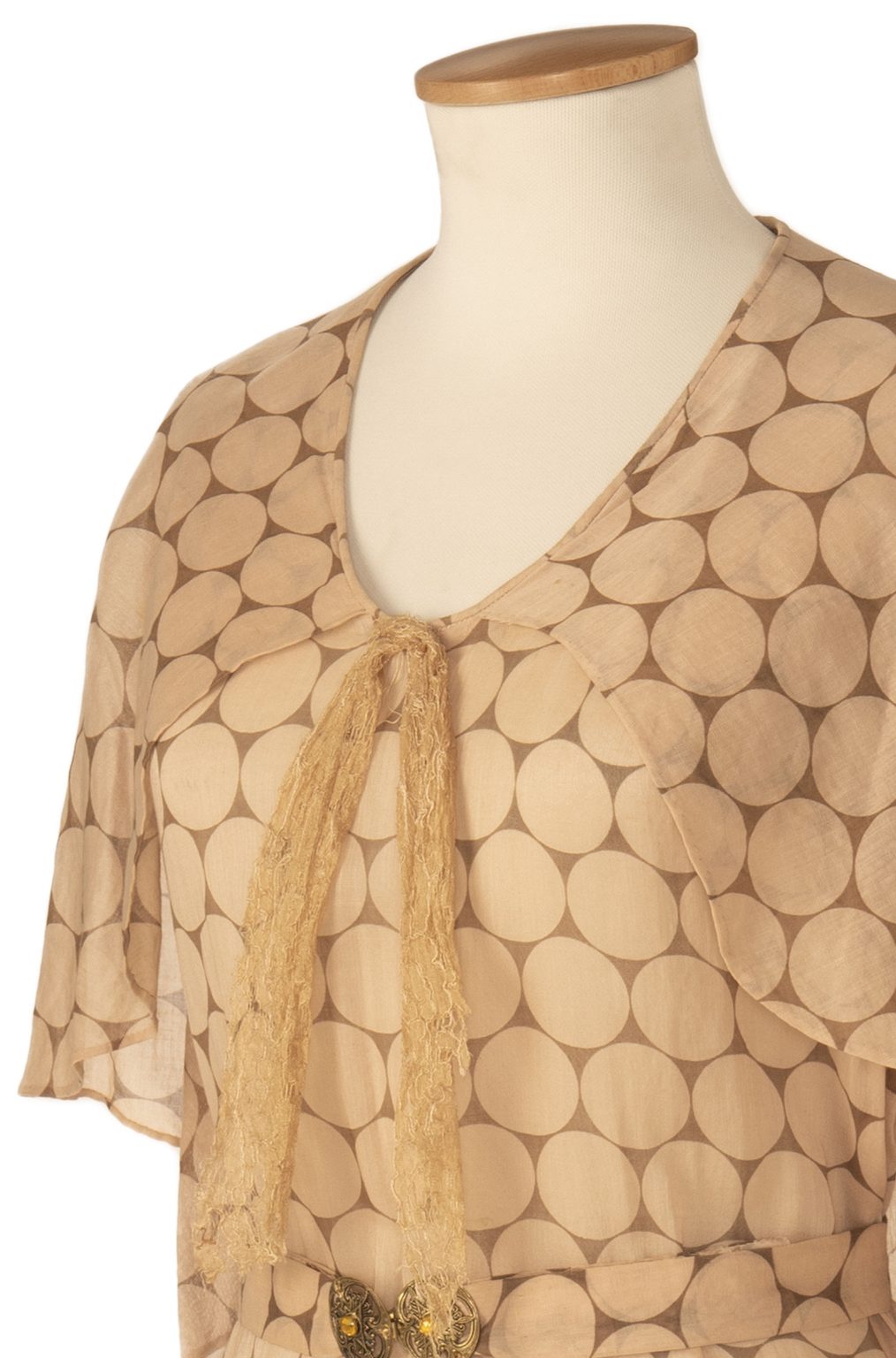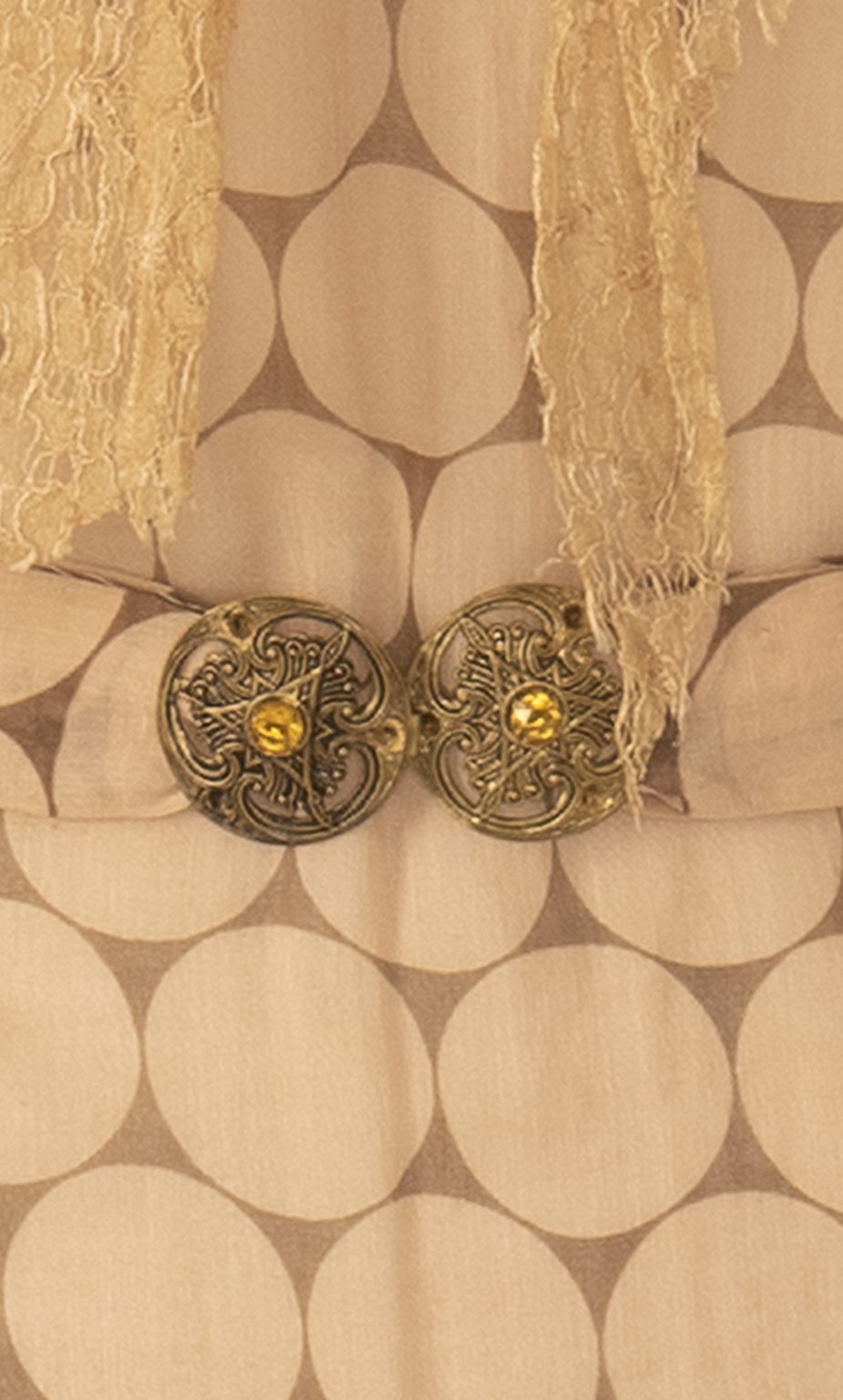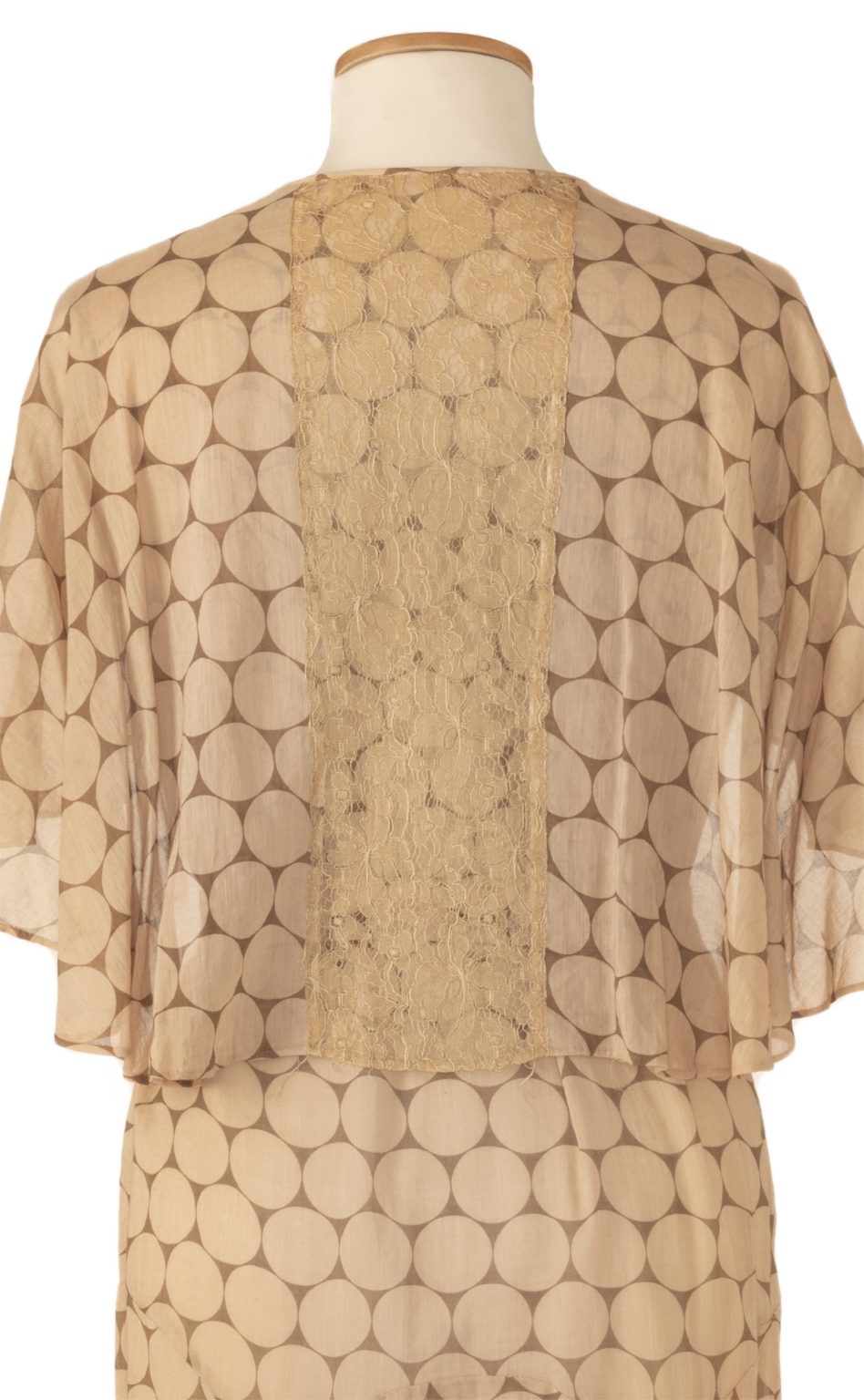
Dress 1930-1935 ca.
Day dress in printed cotton with a circle motif, circa 1930-35. Camilla Colombo Collection
Details



Historical context
The roaring twenties drew to a close with a sharp slump in the global economy caused by the Wall Street Crash in 1929. In the USA the Great Depression ensued causing many to lose their jobs and lifelong savings but repercussions were felt across Europe as the trade market slowed and the demand for European goods declined. This deepening financial crisis brought about an escalation of social problems and boosted the popularity of political extremist movements. The Nazi party rise to power in Germany in 1933 and their aggressive policies led to the invasion of Poland in 1939, which marked the beginning of WWII.
Despite the dramatic socio-political situation of the inter-war period, the battle for women’s rights and equality continued to bear fruit and in many countries women won the right to vote, at least in local elections. Progress was made in science and technology that led to the development of household appliances and marked the start of a new consumer economy. The Golden Age of Hollywood cinema was in full swing brightening the bleakness of everyday life and allowing people to dream of a better future. Unfortunately, it was a long time before these dreams became reality.
Fashion
After the Roaring Twenties, fashion changed to a softer, more feminine style. The waistline returned to its natural position and was enhanced by thin fabric belts. Dresses became longer, opening out in pleats and flounces and decorated with bows and ruffles. Madeleine Vionnet revolutionized tailoring with the bias cut, a diagonal cut that made evening dresses figure hugging and sensual. Trousers were popular among women for sportswear and in the summer months, while blouses and skirts were combined with cardigans and jackets. Fashion looked to Hollywood cinema as a form of escapism from the
worries and uncertainties of the 1930s.
In Italy, the first steps were taken towards a national fashion and an Italian style as the National Fashion Agency was born in Turin in 1935. Fascism spread the cult of gymnastics and a healthy, sporty and vigorous body while the Lidel newspaper promoted Mussolini’s anti-thinness campaigns.
Technical info
Women
Chanel
“In order to be irreplaceable one must always be different.” – Coco Chanel Gabrielle Bonheur “Coco” Chanel was the French designer who ruled Parisian high fashion for nearly six decades. Her elegantly casual designs inspired fashionable women to abandon the complicated and uncomfortable dresses – such as petticoats and corsets – that were prevalent in 19th-century clothing.
Among her now classic innovations was the Chanel dress, the quilted bag, the costume jewellery and the “little black dress”. Through her entrepreneurial spirit and her creativity, Gabrielle Chanel radically changed the norms of fashion and inspired a new vision of a free and active woman. Her extraordinary story is that of a woman who overcame great obstacles to achieve independence and professional success. Inspired by Chanel’s legacy, the Chanel Foundation supports gender equality and the advancement of women as agents of change in society.